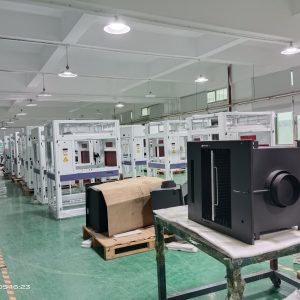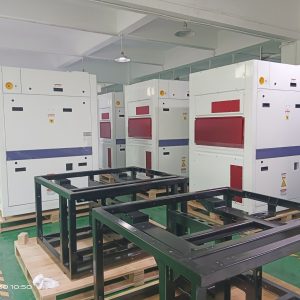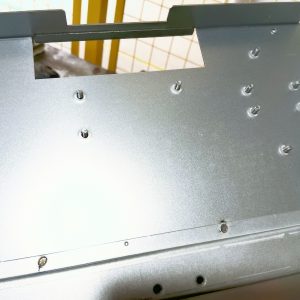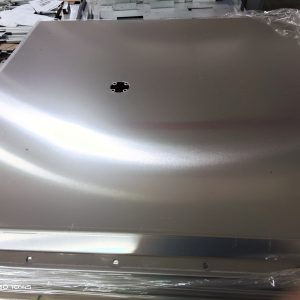Controlling the quality of sheet metal e-coating involves meticulous management of the entire coating process, from surface preparation to final inspection. Here’s a detailed guide on how to effectively manage and ensure the quality of e-coating for sheet metal parts.
1. Surface Preparation
Cleaning and Degreasing
- Method: Use alkaline cleaners or acid degreasers to remove contaminants. Ensure that the cleaning solution is fresh and at the correct concentration.
- Control Points: Check solution concentration regularly, monitor temperature, and verify cleaning time.
- Tools: Cleaning tanks, high-pressure washers, and ultrasonic cleaners.
- Frequency: Daily checks and periodic maintenance.
Surface Conditioning
- Method: Apply a pre-treatment like phosphating or chromating to improve adhesion.
- Control Points: Monitor chemical concentrations, pH levels, and treatment time.
- Tools: pH meters, chemical concentration meters.
- Frequency: Daily or as per the maintenance schedule.
Rinsing
- Method: Use deionized or distilled water to avoid impurities.
- Control Points: Check water quality and flow rates.
- Tools: Water filtration systems, flow meters.
- Frequency: Regular checks and maintenance.
2. E-Coating Bath Management
Bath Chemistry
- pH Levels:
- What to Check: Ensure the pH level of the e-coat bath is within the specified range.
- Tool: pH meter.
- Frequency: Several times a day.
- Conductivity:
- What to Check: Measure the conductivity to ensure optimal bath performance.
- Tool: Conductivity meter.
- Frequency: Several times a day.
- Temperature:
- What to Check: Maintain the temperature within the recommended range.
- Tool: Thermometer or temperature probe.
- Frequency: Several times a day.
- Additives:
- What to Check: Ensure correct concentrations of additives like wetting agents and defoamers.
- Tool: Additive concentration test kits.
- Frequency: Regularly, as per supplier recommendations.
3. Process Parameters
Voltage and Current
- What to Check: Maintain the correct voltage and current for proper coating.
- Tool: Power supply unit with monitoring.
- Frequency: Continuously monitored during e-coating.
Deposition Time
- What to Check: Ensure parts are immersed for the correct time.
- Tool: Timers or programmable logic controllers (PLCs).
- Frequency: Each batch or process cycle.
4. Coating Quality Inspection
Film Thickness
- What to Check: Measure the dry film thickness of the coating.
- Tool: Dry film thickness gauge.
- Frequency: Per batch or as per inspection schedule.
Adhesion
- What to Check: Test for adhesion using methods like cross-hatch adhesion tests.
- Tool: Cross-hatch adhesion test kit.
- Frequency: Per batch or as required.
Appearance
- What to Check: Inspect for uniformity, color consistency, and surface defects.
- Tool: Visual inspection or magnifying tools.
- Frequency: Per batch or as required.
5. Curing Process
Temperature and Time
- What to Check: Verify the curing oven temperature and time.
- Tool: Oven temperature controls and timers.
- Frequency: Each batch or as required.
Conditions
- What to Check: Ensure even air circulation and proper ventilation.
- Tool: Ventilation checks, air flow meters.
- Frequency: Regular maintenance.
6. Maintenance and Calibration
Equipment Maintenance
- What to Check: Regularly inspect and maintain equipment.
- Tool: Maintenance logs and checklists.
- Frequency: Weekly or as per manufacturer’s recommendations.
Calibration
- What to Check: Ensure measurement instruments are calibrated.
- Tool: Calibration standards.
- Frequency: Monthly or as required.
7. Environmental Controls
Air Quality
- What to Check: Control for dust and contaminants.
- Tool: Air filtration systems, clean room environment.
- Frequency: Ongoing.
Waste Management
- What to Check: Proper disposal and treatment of waste.
- Tool: Waste disposal protocols.
- Frequency: Ongoing.
8. Documentation and Procedures
Standard Operating Procedures (SOPs)
- What to Check: Ensure SOPs are up-to-date and followed.
- Tool: SOP manuals.
- Frequency: Ongoing.
Records and Data
- What to Check: Maintain detailed records for traceability.
- Tool: Record-keeping systems.
- Frequency: Ongoing.
9. Training and Personnel
Operator Training
- What to Check: Ensure all operators are trained and knowledgeable.
- Tool: Training programs and certifications.
- Frequency: As needed for new personnel or refresher training.
10. Feedback and Improvement
Quality Reviews
- What to Check: Regularly review data and feedback for process improvements.
- Tool: Quality review meetings, process improvement programs.
- Frequency: Monthly or quarterly.
Process Optimization
- What to Check: Seek and implement improvements.
- Tool: Continuous improvement initiatives.
- Frequency: Ongoing.
Quality Control Checklist
| Aspect | What to Check | Tool | Frequency |
|---|---|---|---|
| Surface Preparation | Cleaning, Pre-treatment, Rinsing | Cleaning tanks, pH meters, Concentration meters | Daily |
| E-Coating Bath Chemistry | pH, Conductivity, Temperature, Additives | pH meter, Conductivity meter, Thermometer | Several times a day |
| Process Parameters | Voltage, Current, Deposition Time | Power supply unit, Timers | Continuous |
| Coating Quality | Film Thickness, Adhesion, Appearance | Thickness gauge, Adhesion test kit | Per Batch |
| Curing Process | Temperature, Time, Oven Conditions | Temperature controls, Timers | Each Batch |
| Maintenance | Equipment Condition, Calibration | Maintenance logs, Calibration standards | Weekly/Monthly |
| Environmental Controls | Air Quality, Waste Management | Filtration systems, Waste disposal protocols | Ongoing |
| Documentation | SOP adherence, Record Keeping | SOP manuals, Record-keeping systems | Ongoing |
| Training | Operator Knowledge, Certifications | Training programs | As Needed |
| Feedback and Improvement | Quality Reviews, Process Optimization | Review meetings, Improvement programs | Monthly/Quarterly |
By adhering to these guidelines, you can effectively control and improve the e-coating quality of sheet metal parts.
Troubleshooting Common Issues
| Issue | Possible Causes | Solutions |
|---|---|---|
| Uneven Coating | Improper surface preparation, inconsistent bath parameters | Check cleaning procedures, adjust bath conditions, ensure consistent immersion times |
| Poor Adhesion | Inadequate surface preparation, incorrect pH or conductivity | Review pre-treatment process, check bath chemistry, ensure proper curing |
| Thick/Thin Coating | Incorrect voltage/current settings, varying deposition times | Adjust e-coating parameters, ensure consistent bath conditions |
| Appearance Issues | Contaminants in the bath, inconsistent application | Check for impurities, inspect application methods, review curing conditions |
By systematically addressing these aspects, you can achieve high-quality e-coating results for your sheet metal parts.
Useful Resources and Tools
- Books: Electrocoating: A Guide to Technology and Process Control by R. R. Parker.
- Standards: ASTM B117 (Standard Practice for Operating Salt Spray (Fog) Apparatus), ISO 12944 (Paints and varnishes – Corrosion protection of steel structures).
- Equipment Suppliers: Companies like Nordson Corporation, Axalta Coating Systems, and PPG Industries offer specialized equipment and technical support for e-coating.
By following this comprehensive approach, you can maintain and enhance the quality of your e-coating process for sheet metal parts.
china sheet metal fabrication manufacturers | sheet metal fabrication company china | china sheet metal fabrication companies | china sheet metal forming manufacturers | china sheet metal fabrication factory | china metal enclosure manufacturers | china sheet metal fabrication supplier | china custom sheet metal parts | china sheet metal parts company | china precision sheet metal manufacturer | china sheet metal parts manufacturers | china sheet metal manufacturing manufacturers | Folded Sheet Metal Box





